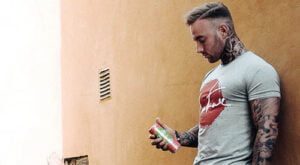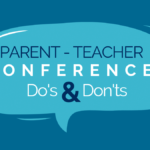Professional Dress Codes for Teachers: What to Wear and What to Avoid
Teaching in Style: Navigating Professional Dress Codes with Confidence
As a teacher, you are a role model for your students, and your appearance plays a significant role in how they perceive you. Dressing professionally shows that you take your job seriously and that you respect the learning environment. However, navigating the world of professional dress codes can be challenging, especially with the wide range of styles and trends available. To help you out, here are some tips on what to wear and what to avoid as a teacher.

Firstly, when it comes to dressing professionally, it’s essential to strike a balance between looking polished and comfortable. Teachers often spend long hours on their feet, so you want to wear clothes and shoes that are both stylish and functional. Consider wearing clothing made of breathable fabrics that allow for ease of movement. This can include items such as slacks, blouses, skirts, and dresses. Avoid wearing anything too tight or revealing, as this can be distracting for students and may not be appropriate for the school environment.
Secondly, keep in mind that the way you present yourself can impact how you are perceived by colleagues and superiors. This includes being mindful of the accessories and makeup you wear. Avoid wearing large statement jewelry or brightly colored hair. Instead, opt for classic and understated accessories that complement your outfit without overpowering it.
Thirdly, consider the dress code of your school or district when selecting your outfits. Some schools may have more formal dress codes, while others may have more relaxed guidelines. You should adhere to these codes while still finding ways to express your personal style. For example, you can incorporate colorful scarves, jewelry, or ties into your outfits to add some personality while still maintaining a professional look.
Finally, it’s important to keep your clothes clean and well-maintained. Avoid wearing anything that is wrinkled, stained, or has holes in it. You want to present yourself as someone who takes pride in their appearance and pays attention to detail.
What to Wear
Business Casual: A popular dress code for teachers, business casual attire typically consists of dress pants or khakis, a button-down shirt or blouse, and dress shoes. For women, skirts or dresses that fall below the knee are also appropriate.
Smart Casual: A slightly more relaxed version of business casual, smart casual attire includes items such as polo shirts, sweater vests, and loafers. Women can wear blouses or dressy tops with slacks or skirts.
Professional Dress: This dress code is more formal and typically requires a suit or dress with a blazer for men and women. Dress shoes or pumps are also appropriate. Professional dress is often required for special events or meetings.
School Spirit Wear: On designated days or during spirit weeks, it’s appropriate to wear clothing that displays school spirit, such as t-shirts or sweatshirts with the school logo or colors.
What to Avoid
Casual Wear: Sweatpants, yoga pants, and athletic wear are too casual for a professional environment and should be avoided.
Revealing Clothing: Clothing that is too tight or revealing is not appropriate for a professional setting. Avoid low-cut tops, short skirts, and shorts.
Graphic T-Shirts: T-shirts with graphic designs or slogans may be acceptable on casual Fridays, but they should be avoided on other days.
Flip Flops or Sneakers: Flip flops and sneakers are too casual for a professional environment. Stick to dress shoes or loafers.
Overly Trendy Clothing: While it’s important to stay current with fashion trends, it’s important not to go overboard.
In conclusion, dressing professionally as a teacher is essential for setting a positive tone and establishing respect in the classroom. By balancing style and comfort, avoiding overly flashy accessories, adhering to dress codes, and keeping your clothes clean and well-maintained, you can present yourself as a professional and respected educator. Remember, your appearance not only reflects your personal style but also sets the tone for how you are perceived by students, colleagues, and superiors.
Image Source : Garment Printing







